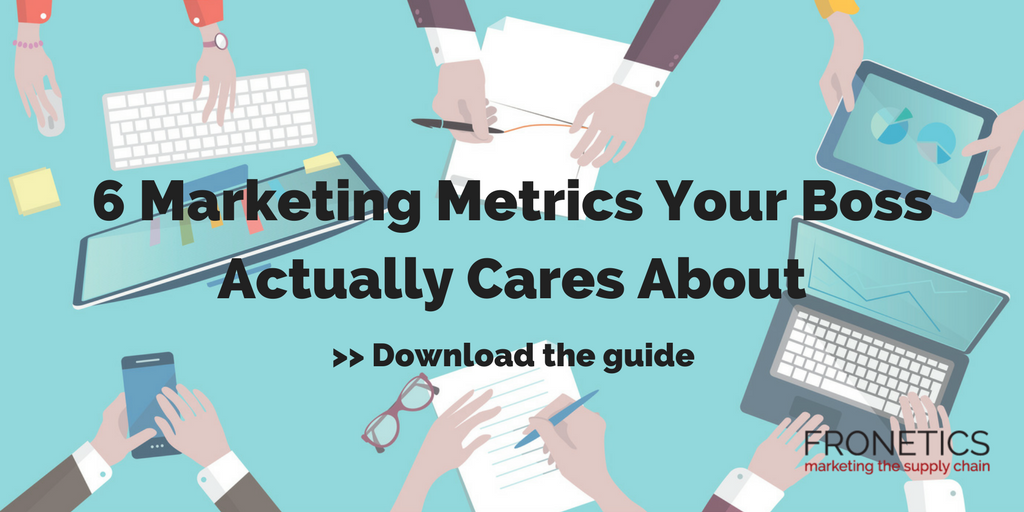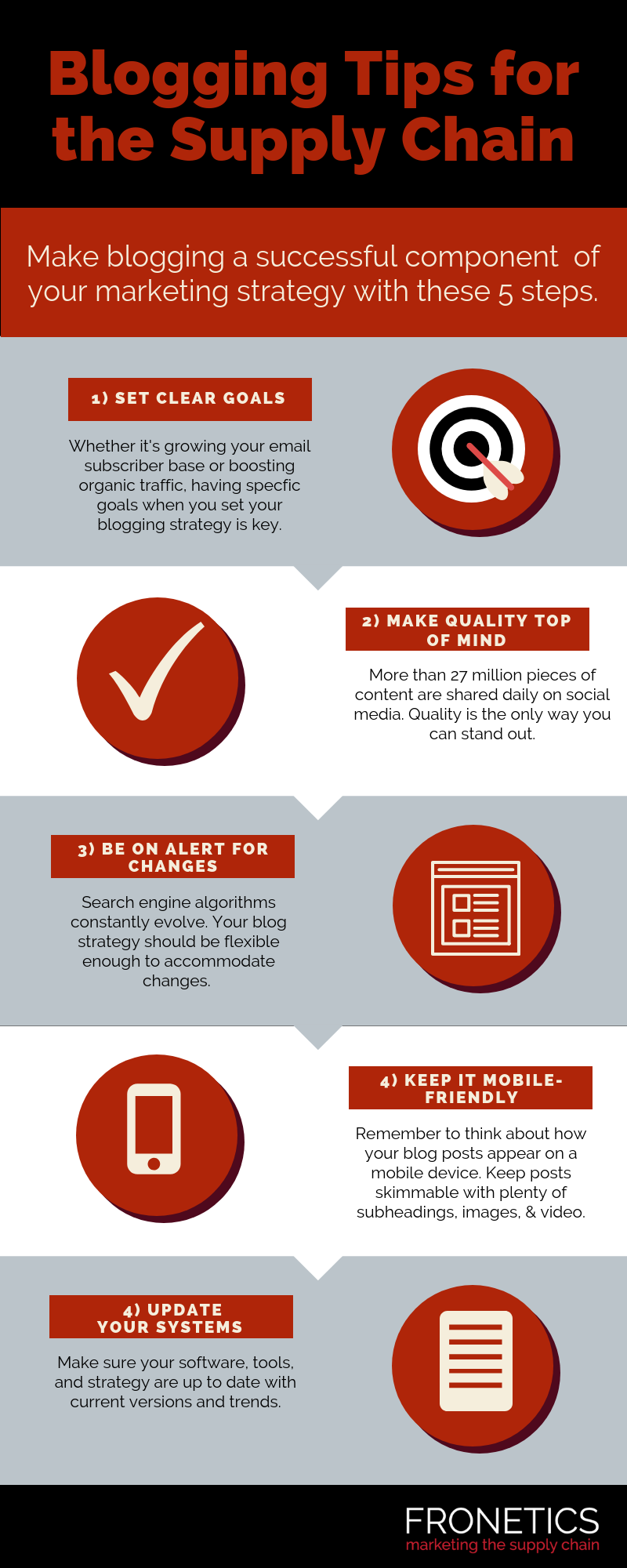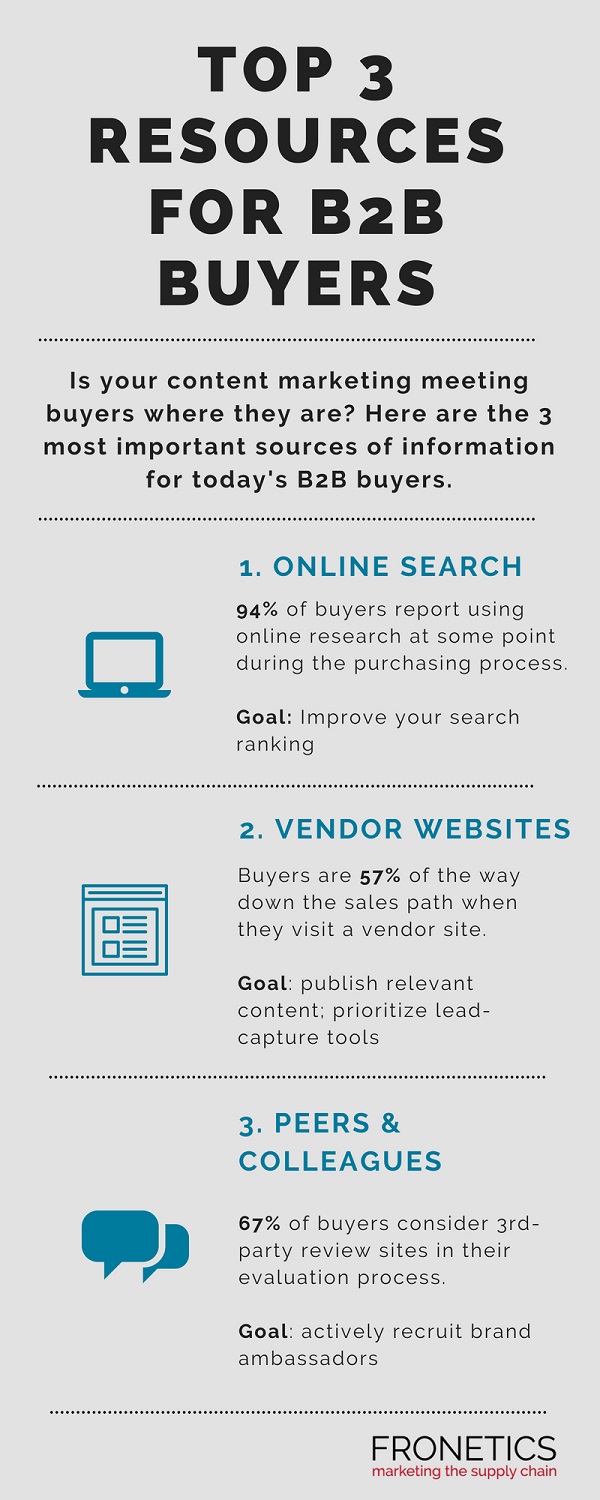
by Fronetics | Apr 16, 2019 | Blog, Content Marketing, Marketing, SEO, Video Marketing
With the growing popularity of video, it’s harder for video posts to rank in search results. Here’s what marketers need to know about SEO and video posts.
Highlights:
- When choosing your video hosting platform, it’s important to consider the reasons why you want your videos to rank, such as lead generation or brand awareness.
- Spend time crafting an engaging video title and description and make sure to use keywords audiences are actually searching for.
- Don’t solely rely on optimizing your video to receive placement on search engines. It’s just as important that the rest of the page is optimized for SEO.
Video transcript:
I’m Ulrika Gerth, and I’m the Content Writer and Strategist at Fronetics. Today I’m going to talk about what you need to know about SEO and video posts.
So video SEO is simply optimizing your video to be indexed and rank on the search engine results pages, like Google.
In the last few years, video marketing has become more and more popular among businesses and it’s easy to see why. It’s cost effective and easy to produce. But with the explosion of video, it’s also become much harder to get ranked on universal search results.
Here are a few ways to optimize your videos.
1. Pick the best platform.
When choosing your video hosting platform, you need to consider the reasons why you want your videos to rank. Are you optimizing your video to gain traffic and generate leads? Or are you more interested in thought leadership and brand awareness?
2. Make the video engaging.
The video thumbnail is what searchers will see when your video is indexed, and therefore it plays an important role in whether they will click on your video.
3. Pay attention to the title and description of your video.
Just like they do for a blog post, the title and description play a role in ranking videos. Spend time crafting an engaging video title and description. Make sure you do keyword research so you use keywords people are actually searching for.
4. Ensure the rest of your page is relevant to the video and optimized for SEO.
You can’t rely only on optimizing your video to receive placement on search engines. It’s just as important that the rest of the page is optimized for SEO, or the search engines won’t bother to crawl it in the first place.
For more information, visit fronetics.com.
Related posts:


by Fronetics | Jan 17, 2019 | Blog, Content Marketing, Logistics, Marketing, Supply Chain
Blogging should be a central part of your content marketing strategy. Here are our top tips for creating and sustaining a successful supply chain blog in 2019.
Highlights:
- Blogging needs to be a central part of your content marketing strategy.
- Focus on quality over quantity.
- Make all posts mobile-friendly.
It’s the start of a new year and the perfect time to start setting goals and strategizing how to achieve them. Hopefully, blogging is a big part of your strategy for 2019 — after all, supply chain companies should make blogging a central part of their content marketing strategy for all kinds of reasons.
[bctt tweet=”At last count, users share 27 million pieces of new content on social media every single day. Twenty-seven million!” username=”Fronetics”]
Making your supply chain blog stand out from the pack isn’t always easy. That’s why we created the infographic below. Read on for our top 5 supply chain blogging tips for 2019.
5 tips for your supply chain blog

(Made with Canva)
1. Set clear goals
We know, this one sounds obvious. But you’d be surprised how often marketers overlook this seemingly simple step or settle for general, vague goals. It’s true that blogging can have all kinds of positive impacts for the supply chain, but that doesn’t mean that you should just be blogging without a clear, documented set of goals specific to your business.
Whether it’s growing your email subscriber base, boosting organic traffic, or generating more qualified leads, having specific goals in mind when you set your blogging strategy is key. For one thing, it lets you target your efforts and generate content that is focused on achieving a specific result or set of results. Furthermore, having objectives allows you to be far more effective in evaluating your results, including measuring blogging ROI, and tweak your strategy accordingly.
What are your top three goals for your supply chain blog in 2019? Let us know in the comments!
2. Make quality top of mind
Ponder this for a minute: At last count, users share 27 million pieces of new content on social media every single day. Twenty-seven million. In a world of skyrocketing quantity, quality is ever-more important. There’s a huge amount of pressure on supply chain marketers to produce a constant stream of content, but the sad truth is, if you’re not producing high-quality, substantive content, you’re wasting time and energy.
For supply chain companies in particular, it’s crucial that every piece of your content be well-researched, clearly written, focused, and trustworthy. We know that producing consistently high-quality content isn’t easy, but, trust us: if you invest the time and energy to make your content stand out, you will see the results. To get you started or keep you focused, check out our guide to creating good content for logistics and supply chain marketers.
3. Be on the alert for changes
Particularly when it comes to search engine optimization (SEO), changes happen fast these days. In August of 2017, Google updated its algorithm, continuing a set of changes we’ve been watching for a while now. Voice searches are becoming increasingly prevalent, and researchers estimate that by 2020, 50% of all searches will be voice queries.
As these changes continue to happen, it’s crucial that your strategy is lithe and flexible, ready to adapt to a quickly shifting climate. This means keeping abreast of conversations going on in the industry, following blogs you trust and respect, as well as tracking your own results, and being alert to changing trends.
4. Keep it mobile-friendly
You don’t need researchers to tell you: people are increasingly receiving and reading content on their phones. Whether it’s social media, emails, or blogs, mobile usage continues to skyrocket as devices become more and more ubiquitous and user-friendly.
What does this mean for supply chain blogs? Of course, your website needs to have a visually attractive and accessible mobile version, but it’s also helpful to think about your blog posts in terms of how they appear on a phone. Keep your posts skimmable, with plenty of subheadings to orient the reader, and absolutely include video whenever possible.
5. Make sure your systems are up to date
We keep coming back to the reality of the rate of change these days. It can be exhausting and overwhelming for marketers to keep pace. Take the opportunity of the new year to make sure all your blogging-related tools are updated and running the current software.
As you’re keeping your tools fresh, it’s also a good time to make sure your procedures are running smoothly and are at a pace with the current marketing climate. This means evaluating responsibilities and results within your team, ensuring that your editorial calendar is serving you well, and taking a look at your data collection and reporting methods.
Bonus: What not to do in 2019
These might seem obvious, but again, you’d be surprised how may marketers fall victim to these blogging “don’ts.” We figured it bore repeating.
- Don’t: attempt to post content that doesn’t reflect your business’ “comfort zone.” Stick to what you know, and do it well.
- Don’t: copy and paste text or images from other blogs. Using other content for ideas is great. Copying it verbatim is verboten.
- Don’t: post at irregular intervals. Creating a content schedule and sticking it is key to establishing a loyal following and boosting your credibility.
What goals do you have for your supply chain blog this year?
Related posts:


by Fronetics | Sep 20, 2018 | Blog, Content Marketing, Logistics, Marketing, Social Media, Supply Chain
Online searches, vendor websites, and peer recommendations are the top 3 resources for B2B buyers.
As a marketer, it’s not enough to just know about the B2B buyer’s process. Your success rides on your ability to understand how your buyers are getting their information — and, more specifically, where they’re getting the information they need to make a purchasing decision.
So where are they getting most of their information? I can tell you, it’s no longer from sales reps.
In our digital era, buyers are heading straight to the internet to gain valuable insight before making purchases. Thanks in large part to social media, mobile technologies, and the world wide web, buyers are becoming increasingly self-sufficient. In fact, 70% of the buyer’s journey is complete before a buyer even reaches out to sales. This means they have already spent a fair amount of time educating themselves with the enormous amount of information available to them on the internet.
[bctt tweet=”70% of the buyer’s journey is complete before a buyer even reaches out to sales. This means they have already spent a fair amount of time educating themselves with the enormous amount of information available to them on the internet.” username=”Fronetics”]
Is your content marketing meeting buyers where they are? Here are the three most important sources of information for B2B buyers.
Infographic: 3 top resources for B2B buyers

(Made with Canva)
Takeaway: Get in early
Listen, your prospects are forming their opinions about your business and your products based on what they find on the web, and early on.
This new reality may seem daunting, given how much of the purchase decision-making process occurs before you have the opportunity to engage with a potential client. But in reality, this changing climate offers serious opportunities for businesses to demonstrate their expertise, without turning buyers off with overt sales pitches.
To make the most of the potential purchaser’s experience with your business, content is key.
A robust content marketing program builds brand awareness, establishes trust and rapport with prospects, and generates traffic to your website. Thoughtfully generated and curated content catches the attention of buyers and keeps them interested in your business through the time of purchase.
With a well-thought-out, data-driven content marketing strategy, you’ll be ready to meet digital natives where they are.
Related posts:


by Fronetics | Sep 17, 2018 | Blog, Content Marketing, Logistics, Marketing, Social Media, Strategy, Supply Chain
Today’s B2B buyers are mostly digital natives who get the majority of their purchasing information from online searches, vendor websites, and peer recommendations.
From a content marketing perspective, knowing where your buyers get their information is critical to an effective strategy. So what are most important sources of information for today’s B2B buyers? 20 years ago, you might have named things like product info sheets or sales reps. But not anymore.
B2B buying has completely evolved, thanks in large part to the increasing percentage of digital natives who now make up the B2B purchasing landscape.
Is your content marketing strategy meeting buyers where they are? Here are the three most important sources of information for B2B buyers.
3 top sources of information for B2B buyers
1. Online search
Not only is an online search the first move for 62% of B2B buyers, 94% of buyers report using online research at some point during the purchasing process. And this isn’t a surprise, when you consider that, according to a study of millennial buyers by Merit, “some 73% of 20 to 35 year olds are involved in product or service purchase decision-making at their companies.”
[bctt tweet=”Not only is an online search the first move for 62% of B2B buyers, 94% of buyers report using online research at some point during the purchasing process.” username=”Fronetics”]
So what does this mean for your business? Gone are the days when a simply thinking about keyword rankings was enough to boost your SEO. In our four-part series on writing for SEO, we address how search engines and the search landscape have changed over the past several years. Improving your search ranking can seem like a complex process, but in the end it all boils down to one thing: quality content, presented in a clear and compelling manner.
2. Vendor websites
So buyers conduct their online search. And if you’ve done your content marketing homework, they find your business. How does your website stack up?
According to Bain’s global customer insights chief Eric Almquist, by the time they reach your website, buyers “will have already formed a strong opinion about many aspects of the value expected from a vendor.” For this reason, your website should “provide a wealth of information on these types of value, with details on where… products have been successful.”
Your website should be one of your primary assets. If you don’t give visitors plenty of easy, attractive opportunities to convert on your website, content marketing won’t generate leads for you. Your content should be organized and clear, presented with the goal of helping your potential customers. And opportunities for conversion should be everywhere.
3. Peers and colleagues
As digital natives step into purchasing roles in the supply chain, they’ve “brought their consumer habits to the B2B world,” says Almquist. This means that a big part of the purchasing process involves review sites, where purchasers seek the opinion of their peers and colleagues. “Reviews will tell the buyer how a vendor performs on many ease-of-doing-business elements long before the buyer has actual experience with that vendor.”
This aspect of content marketing can seem daunting for many businesses because of the perception that what’s on these sites is completely out of your control. But with the right strategy in place, review sites are actually a big opportunity for your business.
For a start, vendors “should encourage customers who are advocates of the company to provide reviews on relevant sites.” It’s also important to take an active role on these sites, responding to customer reviews — even the occasionally inevitable bad ones.
Says Almquist, “First impressions matter as much as ever in B2B markets. Today though, that first look comes through websites, user forums, and quick case studies, not flesh-and-blood sales pitches.”
With a well-thought-out, data driven content marketing strategy, you’ll be ready to meet digital natives where they are.
What sources of information for B2B buyers do you focus on?
Related posts:


by Fronetics | Sep 12, 2018 | Blog, Content Marketing, Logistics, Marketing, Strategy, Supply Chain
Here are the top three resources digital natives are using to research solutions and how your B2B business can prepare to meet them online.
Knowing where your buyers do research when making purchasing decisions is crucial to any marketing strategy. Digital natives, a new generation of younger buyers, have completely revolutionized the purchasing landscape for B2B vendors. Their biggest resource? The world wide web.
[bctt tweet=”73% of employees ages 20-35 years old are involved in product or service purchase decision-making at their company. In fact, one-third reported they are the sole decision maker for their department.” username=”Fronetics”]
A study of millennial buyers by Merit found that 73% of employees ages 20-35 years old are involved in product or service purchase decision-making at their company. In fact, one-third reported they are the sole decision maker for their department.
What does this mean for B2B marketers?
These younger, and typically more technologically advanced, buyers expect they can find the information they need about your brand online through an organic search. Your company needs to have any and all content available at the push of a button.
But the work doesn’t stop there. Once a buyer finds your brand, you hope they make the leap to visit your website, meaning your site needs to be one of your most appealing assets. If you don’t give visitors plenty of easy, attractive opportunities to convert on your website, content marketing won’t generate leads for you.
But online searches and vendor website aren’t the only resources digital natives are using to make purchasing decisions. This younger generation also relies heavily on recommendations from peers and colleagues.
Like recommendations from friends and family in their personal lives, the opinion of other buyers becomes very important. A big part of the purchasing process involves B2B review sites, where purchasers seek the opinion of their peers and colleagues.
Here’s Elizabeth Hines, creative/editorial director at Fronetics, to discuss the top resources for B2B buyers and how you can be prepared to meet them online.
Video: top 3 resources for B2B buyers
Final thoughts
Though the purchasing landscape has changed over the past decade, B2B marketers have the tools to get in front of the right buyers. These tools including knowing what resources buyers are using and how to use these assets to your advantage. With a documented strategy and high-quality, informative content, you’ll be ready to meet digital natives where they are.
Related posts:











